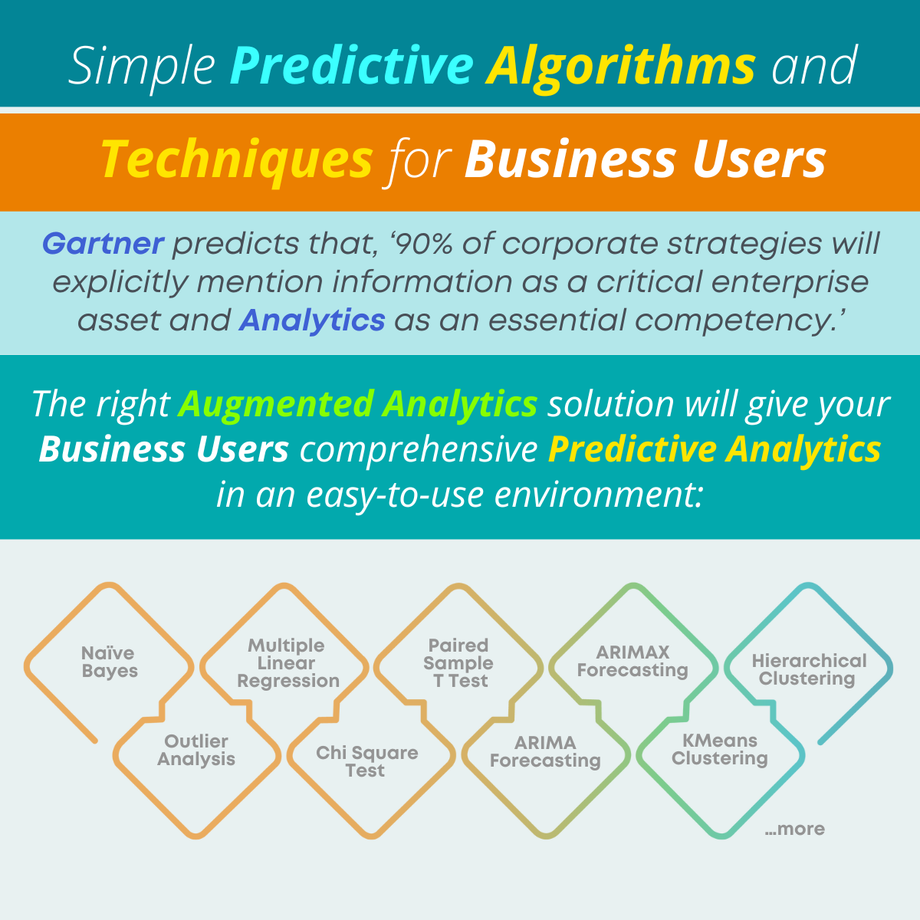It is often difficult for an organization to imagine its business users engaged in analytics but, there is no doubt that a competitive market landscape and the constant need for up-to-date, accurate information is necessary to your business success. When you consider the complex, sophisticated topic of advanced analytics, you want to select an analytics solution that is easy for your team to use, one that provides algorithms and techniques for analysis in an easy-to-use environment, so users can select the right technique and perform analytics with confidence.
Gartner research analysts predict that, ‘90% of corporate strategies will explicitly mention information as a critical enterprise asset and analytics as an essential competency.’
In order to get the most out of a self-serve analytical solution, your team members will leverage many types of tools. One of the most important analytical processes your users will employ is predictive analytics for planning and forecasting.
‘The right augmented analytics tool provides auto-suggestions to select the techniques or algorithms that will best suit the purpose of the analysis and allows users to gather and analyze the data with intuitive navigation, designed to guide the team member through the analytical process.’
A comprehensive augmented analytics solution should include a full suite of assisted predictive analytics tools. Let’s consider some of the predictive analytics techniques your users will need:
Naïve Bayes Multiple Linear Regression Paired Sample T Test
ARIMAX Forecasting Hierarchical Clustering Outlier Analysis
Chi Square Test ARIMA Forecasting KMeans Clustering
Holt-Winters Forecasting Gradient Boosting Isotonic Regression
Spearman’s Rank Correlation Random Sampling and Stratified Random Sampling KNN Classification
Independent Sample T Test Simple Linear Regression Karl Pearson Correlation
SVM Classification Decision Tree Analysis FP Growth Analysis
Descriptive Statistics Trends and Patterns Multinomial Logistic Regression Classification
Random Forest Regression Binary Logistic Regression Classification Multilayer Perceptron Classifier
Each of these techniques is designed to address a different type of data and a different issue or purpose. These techniques can be used to identify the root cause of problems, to clearly understand challenges and opportunities and to strategize and share data. The most important consideration here is to provide this capability in a self-serve environment that is easy enough for business users with average technical skills.
The right augmented analytics tool provides auto-suggestions to select the techniques or algorithms that will best suit the purpose of the analysis and allows users to gather and analyze the data with intuitive navigation, designed to guide the team member through the analytical process.
‘The right augmented analytics solution should include a full suite of assisted predictive analytics tools.’
The secret to user adoption of augmented analytics is to provide tools that your users will want to embrace, tools that make it easy for them to employ sophisticated analytics without data scientist, IT or analyst skills. Your business can defeat user perception of the complexity of augmented analytics and optimize the true value of integrating analytics into the day-to-day workflow.

